#Agile Development Services
Explore tagged Tumblr posts
Text
Boost Quality with Automation Testing Services

Software testing has always been a vital component of the development lifecycle, acting as a safeguard against errors, inefficiencies, and potential vulnerabilities. But in the fast-paced, innovation-driven world of modern IT, Automation Testing Services are no longer a luxury—they are a necessity.
As digital transformation accelerates and user expectations evolve, businesses are under increasing pressure to deliver flawless applications faster than ever. That’s where automated solutions come in. They allow teams to detect bugs early, enhance test coverage, and ultimately improve release cycles while keeping quality intact.
In this article, we’ll explore the ins and outs of Automation Testing Services, when and how to use them, and how they align with broader Software Testing Services and Agile Development Services for high-performing tech organizations.
What Are Automation Testing Services?
Defining Automation Testing Services
Automation Testing Services refer to the use of specialized software tools and frameworks to execute pre-scripted tests on a software application before it is released into production. These tools compare actual outcomes with expected outcomes, flagging bugs without human intervention.
Core Components of Automation Testing
Test Scripts: Written code that automates test cases.
Automation Frameworks: Reusable structures to streamline test case development (e.g., Selenium, Appium, TestNG).
Continuous Integration/Continuous Deployment (CI/CD): Tools like Jenkins integrate automated tests into development pipelines.
Reporting Tools: Provide real-time feedback and dashboards.
Why It Matters
He or she using manual testing alone can only go so far. Manual tests are repetitive, time-consuming, and susceptible to human error. Automated tests are consistent, faster, and can run 24/7, ensuring comprehensive and ongoing validation of code quality.
When to Use Automated Software Testing Services
Strategic Moments for Test Automation
Knowing when to use Automated Software Testing Services can significantly affect development costs and outcomes. They’re ideal when:
The application is stable: Changes to UI and features are infrequent.
Regression testing is frequent: Automation can rerun tests faster and with consistency.
Load and performance tests are needed: Simulating thousands of users manually is impractical.
You want to integrate with CI/CD: Test automation complements Agile and DevOps workflows.
Automation is Not a One-Size-Fits-All
They should still use manual testing when:
Exploratory or usability testing is needed.
The application is in the very early stages of development.
Business logic is still being defined or rapidly changing.
Your Checklist for Partnering with an Automation Testing Company
What to Look for in an Automation Testing Partner
Before committing, use this checklist to evaluate the potential of an Automation Testing Services provider:
1. Technical Expertise
Do they understand your domain?
Can they work with tools like Selenium, Cypress, or Playwright?
2. Agile Compatibility
Do they align with your Agile Development Services model?
Can they work in iterative sprints with flexible goals?
3. Tool Integration
Do their automation tools integrate with your CI/CD pipeline?
4. Reporting and Documentation
Are their reporting tools transparent and actionable?
5. Security Practices
Is test data handled securely?
Are they compliant with GDPR, HIPAA, etc.?
6. Test Maintenance Capabilities
Can they update test scripts when your app changes?
7. Proven Experience
Do they have a history of delivering reliable Software Testing Services?
Benefits of Automation Testing Services
Why Organizations Rely on Test Automation
1. Speed and Efficiency
They can run tests in seconds that would take hours manually.
2. Reusability
Test scripts can be reused across different projects, reducing duplication.
3. Cost Effectiveness
Although initial setup costs are higher, automation saves money in the long run.
4. Increased Coverage
Automated scripts can test a broader set of conditions and variables.
5. Continuous Testing
Test early, test often—an ideal match for Agile Development Services.
How Automation Testing Complements Software Testing Services
The Relationship Between Manual and Automated Testing
It’s important to note that Automation Testing Services are a subset of broader Software Testing Services, which include:
Functional Testing
Usability Testing
Compatibility Testing
Security Testing
While automation covers repetitive tasks, manual efforts still play a key role in exploratory and human-centric validation.
Blended Strategy Works Best
They use automation for consistency and manual testing for creative, one-off scenarios. This hybrid model leads to better coverage and more reliable outcomes.
How Agile Development Services Fuel Automation
Agile and Test Automation: A Perfect Match
Agile Development Services thrive on rapid iterations and continuous feedback. Test automation aligns perfectly by providing fast feedback loops and reducing time-to-market.
Automation in Agile Sprints
He or she using Agile will benefit from automation at multiple points:
Unit tests after each code check-in.
Integration tests during daily builds.
Regression tests before releases.
Tools That Work Well in Agile Environments
Jenkins + Selenium: For CI/CD pipelines.
JIRA + Zephyr: For test management.
Docker + Kubernetes: For test environment orchestration.
Trends Shaping the Future of Automation Testing
What’s New in 2025?
1. AI-Powered Testing
AI tools can now write and optimize test cases automatically. They reduce maintenance and make testing more intelligent.
2. Scriptless Automation
Tools like TestCraft and Katalon offer low-code/no-code platforms, allowing even non-technical users to create test scenarios.
3. Shift-Left Testing
Testing starts earlier in the lifecycle, even before coding begins.
4. Hyperautomation
The combination of multiple automation technologies to streamline not just testing but also test management and reporting.
Key Takeaways
Automation Testing Services speed up testing, enhance coverage, and support continuous integration.
Use automation strategically—when apps are stable and regression tests are frequent.
Align with partners that support your CI/CD and Agile Development Services.
Software Testing Services still require manual testing in many areas—automation is not a silver bullet.
Embrace the latest trends like AI, scriptless automation, and shift-left strategies.
Conclusion
In today’s software landscape, Automation Testing Services are more than just a technical upgrade—they’re a necessity for businesses that want to stay competitive, agile, and customer-focused.
They enhance efficiency, reduce human error, and enable fast, reliable deployment cycles that are essential in Agile Development Services environments.
Still, automated testing is not the only answer. A thoughtful blend of automated and manual Software Testing Services creates the best results—ensuring software is robust, user-friendly, and ready for the demands of the market.
By integrating the right tools, adopting a flexible mindset, and partnering with experienced providers, companies can truly reap the benefits of automated testing.
#Automation Testing Services#Automated Testing Services#Automation Testing Company#Test Automation Services#Software Testing Services#Agile Development Services
0 notes
Text

Accelerate your digital transformation with Agile Software Development Services from Impressico Business Solutions. They deliver flexible, scalable, and high-quality solutions that adapt to your evolving business needs. Their Agile approach ensures faster time-to-market, continuous improvement, and maximum value through collaborative development and iterative delivery. Let’s build smarter, faster, together.
#Agile Software Development Services#AgileSoftwareDevelopmentServices#Agile Development Services#AgileDevelopmentServices#Agile Software Development#Agile Software Development Company
0 notes
Text
Gamification in Agile: Boosting Engagement and Productivity
Agile methodologies have revolutionized how teams plan, develop, and release products. By breaking projects into manageable sprints and fostering a culture of continual feedback, Agile enables faster turnarounds and more responsive processes. However, there’s an emerging trend that goes a step further to energize teams and spur productivity: gamification. This article explores how integrating gamified principles into Agile workflows can elevate team engagement, improve transparency, and deliver more impactful outcomes.
1. What is Gamification?
Gamification applies game-like elements — such as points, badges, and leaderboards — to non-gaming environments. The goal is to make tasks more engaging by tapping into people’s innate desire for achievement, competition, and recognition. In a work setting, these elements can foster a sense of camaraderie and achievement, encouraging individuals to stay motivated even when faced with repetitive or challenging tasks.
When fused with Agile methodologies, gamification helps team members track progress more visibly, celebrate wins, and sustain momentum. Sprints, user stories, and stand-up meetings become not just essential touchpoints but opportunities for healthy competition and collective achievement.
2. Why Mix Gamification with Agile?
Enhanced Motivation
Agile often thrives on regular feedback loops, frequent check-ins, and milestones. Adding gamification creates tangible incentives — like badges for completing a sprint on time or points for successfully resolving bugs. Such visible achievements can reinvigorate teams, making them eager to collaborate and push each other to meet goals.
Increased Transparency
Agile promotes transparency through backlog visibility and daily stand-ups. Gamification amplifies this by presenting real-time dashboards that show progress toward a common objective. By recognizing both individual contributions and team-wide accomplishments, stakeholders gain clear insight into performance metrics, bottlenecks, and successes.
Accelerated Learning
Continuous improvement is a core Agile value. Gamification supports this by providing immediate feedback — such as leveling up when a specific skill is mastered or a sprint is completed efficiently. Over time, this instant gratification can nurture a culture of rapid learning and curiosity, prompting team members to explore new tools or techniques.
3. Practical Ways to Gamify Agile
Sprint Challenges
Design sprint-specific challenges that reward speed, quality, or innovation. For instance, awarding points to a team that resolves the highest number of user stories within scope can spark friendly competition.
Task Boards with Levels
Instead of a standard Kanban board, implement levels or tiers. Moving tasks from one column to the next could unlock new “levels,” motivating participants to clear their queues.
Achievement Badges
Award badges for significant milestones, like delivering a feature under budget or squashing a high-priority bug before a deadline. Display these recognitions publicly in the team’s workspace.
Leaderboards
Show real-time progress of each team member or sub-team. While some worry leaderboards can cause internal rivalries, balanced design can boost camaraderie and keep individuals accountable.
4. Aligning Gamification with Agile Principles
It’s important to ensure gamification complements rather than overshadows Agile values. Here’s how to keep it authentic:
Focus on Collaboration Over Competition
Healthy rivalry can motivate, but Agile teams function best when synergy is at the heart of their work. Ensure any competition fosters group cohesion instead of individual silos.
Embrace Feedback
Agile relies on iterative feedback. Gamified features should be subject to the same process, adapting to user responses and making incremental improvements along the way.
Balance Rewards
Ensure that achievements recognize not just speed but also quality, teamwork, and continuous learning. Overemphasizing one metric — like the number of tickets closed — could inadvertently compromise product excellence.
Keep It Voluntary
While gamification can energize participants, forcing everyone into the system might lead to resentment or “gaming” the system. Provide clear benefits but allow team members some autonomy in how they engage.
5. Tooling and Platforms
Several project management and collaboration tools now include gamification plugins or built-in features. These range from point-based systems to more elaborate “level-up” journeys. Teams looking to implement gamification can also custom-build solutions:
Open-Source Plugins: Extensions for popular tools like Jira or Trello may offer points, badges, or other game elements.
Custom Solutions: Larger organizations sometimes integrate gamification directly into their internal dashboards, aligning game-based incentives with key performance indicators.
Third-Party Services: Dedicated platforms exist solely to gamify project tasks and performance metrics. This route often includes analytics for deeper insights into team behavior.
6. Role of Specialized Agile Services
Organizations new to gamification often benefit from external guidance to ensure seamless integration into existing processes. Experienced agile development services can help:
Map out sprint structures and identify the most impactful places to insert game elements.
Offer training and support for teams adapting to fresh motivators.
Provide insights on best practices, avoiding pitfalls like reward inflation or toxic competition.
Additionally, these services stay updated on the latest agile development technology, enabling them to recommend or build tools that align with organizational culture and business objectives.
7. Measuring Success
To gauge the impact of gamified Agile workflows:
Engagement Levels
Look at metrics like sprint attendance, number of tasks completed, and code commits to see if participation has risen.
Quality Metrics
Track bug rates or customer satisfaction over several sprints. If these indicators improve, it suggests gamification is driving not just output but also better outcomes.
Team Morale
Conduct regular surveys or one-on-one feedback sessions to see if team members feel more energized and supported.
Retention and Turnover
If your team is more engaged, turnover rates may decrease. A sense of achievement and belonging often keeps people around longer.
Integrating gamification into Agile methodologies can breathe new life into your development sprints, turning routine tasks into rewarding challenges. By blending team spirit with personal achievement, gamification fosters a more engaged, transparent, and productive environment. Whether you tap into agile development services for planning or deploy specialized agile development technology for tracking progress, the key is to start small, gather feedback, and iterate. When done right, gamification doesn’t just produce short-term excitement — it instills long-lasting motivation that continually fuels Agile success.
0 notes
Text

Algoson Software is a leading machine learning and AI Product Development Company based in Mohali, India. Our team of seasoned software and AI developers is dedicated to empowering your business with cutting-edge AI solutions. By leveraging machine learning and data engineering, we transform your data into a strategic asset. Connect with us to elevate your business with Algoson’s advanced AI services. For exceptional software solutions, reach out to us at [email protected].
#leading software development company#customized software product#software development company#custom software development#software development company near me#startup software development#viewJs#reactjs#java#software developers near me#Algoson software services in Switzerland#best software development company websites#website development company#agile development services#certified java developer
0 notes
Text
#truefirms#agile development#dedicated team#choose dedicated team for agile development#agile development services
1 note
·
View note
Text
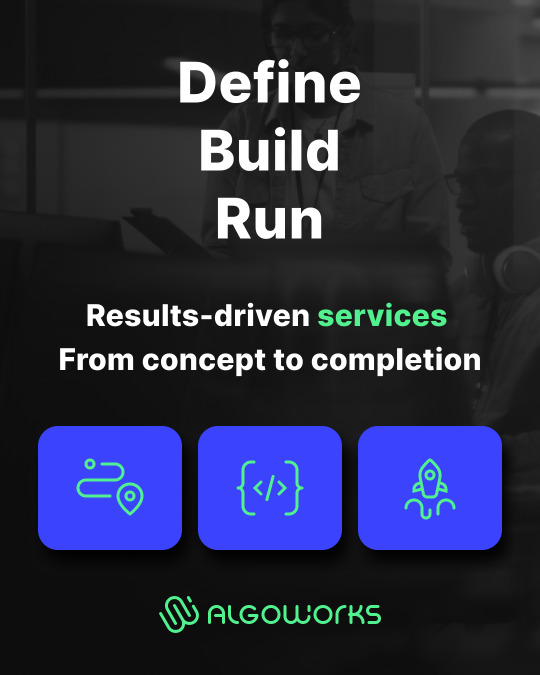
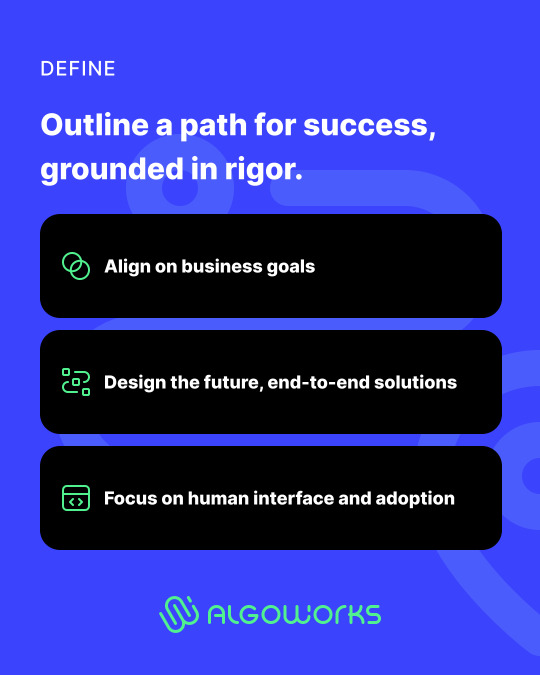

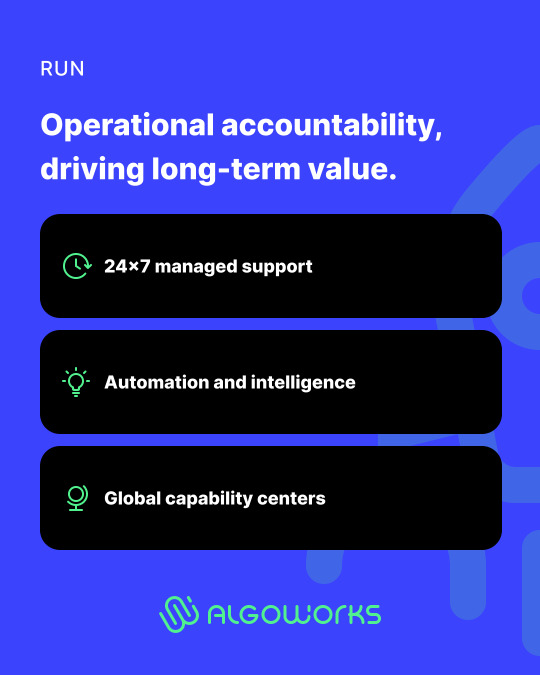
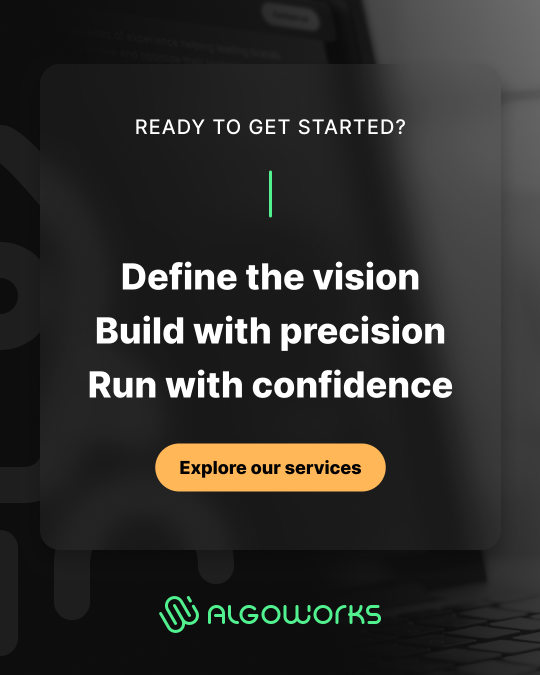
We follow our Define, Build, Run framework to execute flawlessly. From deep listening and 360° planning, to building with agile development and clean code, we ensure performance, security and return on investment through 24/7 monitoring and SLA-backed delivery.
Visit our website to learn more! https://www.algoworks.com/services/
#digital transformation#agile development#clean code#software engineering#cyber security#enterprise solutions#tech innovation#cloud services#innovations#technology#leadership#business excellence
2 notes
·
View notes
Text
Software Product Engineering Services | Irom Technologies
Considering how the world is moving forward, businesses need more than just software development. They need innovation, quality, and speed. This is where product engineering in software development becomes essential. It helps companies build scalable, secure, and user-focused digital products from idea to launch.
Let us explore what software product engineering services are and why they matter in today’s tech-driven landscape.
Understanding Software Product Engineering Services
What are Software Product Engineering Services?
Software product engineering services involve end-to-end development of a software product. It includes designing, developing, testing, deploying, and maintaining a digital product. These services are not limited to coding alone but cover the full product lifecycle.
They aim to create reliable, scalable, and innovative software solutions that meet both user needs and business goals.
Key Components of Software Product Engineering Services
1. Product Ideation and Strategy
Companies begin with an idea and turn it into a workable product concept.
Teams study the market, analyze competition, and identify user needs. This step ensures the product idea solves a real problem and fits current market trends.
A clear product roadmap is created based on research and user feedback. The roadmap sets the direction for development and aligns stakeholders on goals and milestones.
Stakeholders work together to define goals and success metrics. Everyone involved agrees on what success looks like, which guides progress tracking and decision-making.
#software product engineering#product development services#agile software development#digital transformation#UX and UI design#scalable software solutions#end-to-end software services#product lifecycle management#quality assurance testing#innovative tech solutions
0 notes
Text
Staff Augmentation Companies in USA Enhancing Productivity
Companies need flexible ways to grow their teams considering how fast and quick the advancements are happening in the world. That’s why more businesses now depend on a staff augmentation firm. These firms provide skilled professionals quickly, helping companies stay productive and efficient. Whether a business is scaling up or handling a new project, staff augmentation offers the support it needs. From startups to large enterprises, the demand for staff augmentation is rising fast across industries. Companies now realize that hiring full-time staff is not always practical. Staff augmentation solves this by offering talent exactly when and where it is needed. Additionally, it lets businesses remain agile in a fast-moving market without compromising on quality or time.
Why Staff Augmentation Companies in USA Are Gaining Popularity
Staff Augmentation Companies in USA are helping businesses grow faster and smarter. These companies provide immediate access to skilled talent. As a result, businesses meet goals faster without long hiring processes.
#staff augmentation services#IT staff augmentation#staff augmentation USA#flexible hiring solutions#tech talent on demand#agile workforce#hire developers USA#reduce hiring costs#project-based staffing#staff augmentation company
0 notes
Text
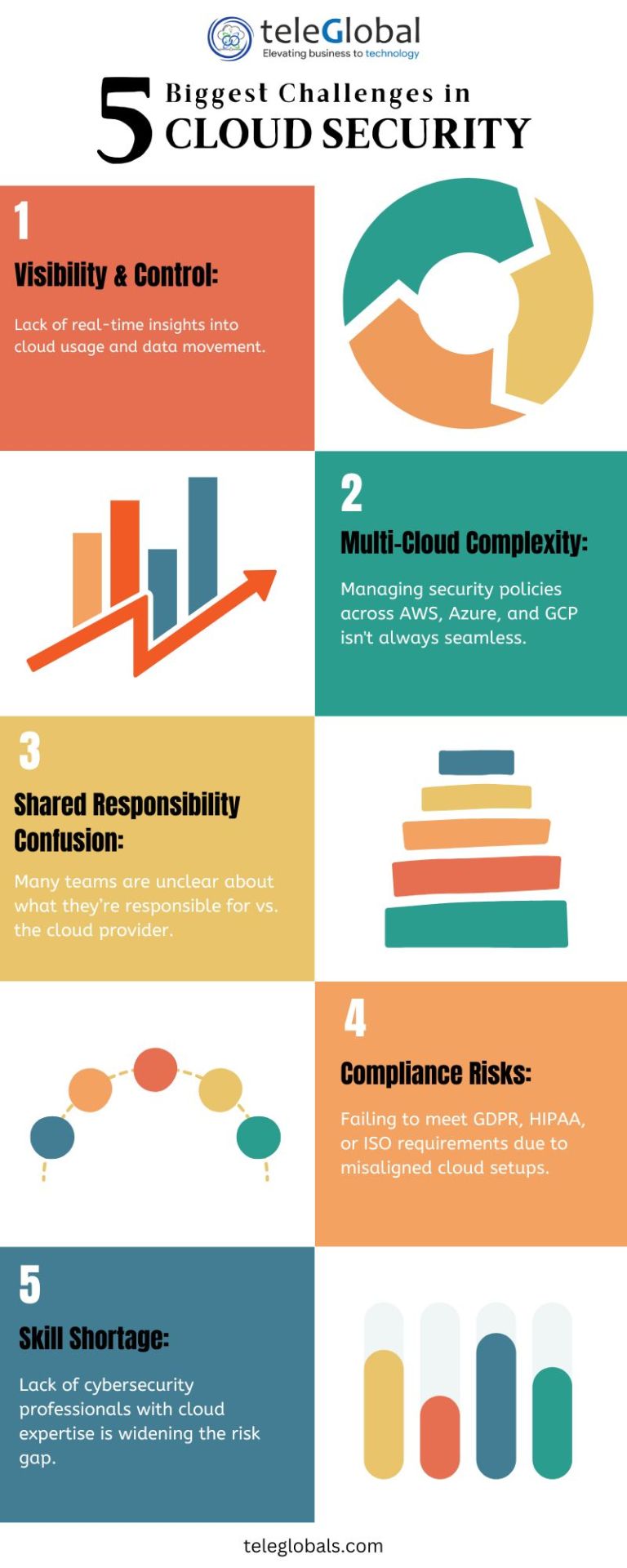
Choosing the Right Software Prototype for Your Project
That brilliant idea for an app or software? It’s easy to get caught up in the excitement and want to jump straight into coding. But what if you could test drive your concept, catch problems early, and get real feedback before spending a fortune? That's the magic of Software Prototypes.
Think of it as a dressing function for your software. It’s about creating a working model to see how your idea feels and functions in the real world. According to a helpful guide by TeleGlobals, the trick is picking the right kind of rehearsal for your show. Let's break the options in easy terms:
The Quick Sketch (Throwaway Prototype): Imagine sketching your idea on a napkin to see if it makes sense. This is the digital version—a fast, low-cost model built to test a core concept. You'll gather crucial feedback and then, as the name implies, toss the prototype and build the real thing from scratch, only smarter.
The Growing Sapling (Evolutionary Prototype): This approach starts with a small, basic version of your product that actually works. Then, based on user input, you continuously water, prune, and grow it—adding features and refining it over time. This tiny sapling eventually blossoms into your final, polished software.
The Lego Set (Incremental Prototype): Building a massive, complex application? Forget to build all at once. This method is like building a giant Lego castle one section at a time. You create and test separate, self-contained pieces of the software and then click them together as you go. This is a key aspect of prototype software development.
The "Looks First" Model (Extreme Prototype): This one is all about the user experience, especially for websites and web apps. You build the front-end of the website—the part that users see and interact with at first glance. It looks and feels like a finished product, but the behind-the-scenes mechanics are simulated. Once the look and feel are perfect, a critical step in UI UX design software, you build the engine to make it all run.
Choosing your path isn't just a technical decision; it's a strategic one. By matching your project's needs with the right prototyping style, you're not just building software—you're building it right.
Read More:
#Software Prototyping#Prototype Development#Software Development#UI/UX Design#Throwaway Prototype#Evolutionary Prototype#Incremental Prototype#Extreme Prototype#App Development#Web Development#Product Management#Agile Development#cloud service providers#cloud consulting services#aws managed services#aws cloud consulting services#aws consulting services#cloud services
0 notes
Text
Explores Agile software development, its benefits, frameworks, and strategies for successful implementation. Learn how Agile improves flexibility, collaboration, and efficiency while reducing costs. Discover key Agile metrics, scaling techniques, and best practices for managing distributed teams. Gain insights into Agile adoption through case studies from industry leaders like Spotify and Cisco.
#AgileSoftwareDevelopment#Agile Software Development#AgileSoftware#Agile Software Development Company#Agile Software Development Services#Agile Development Services
0 notes
Text
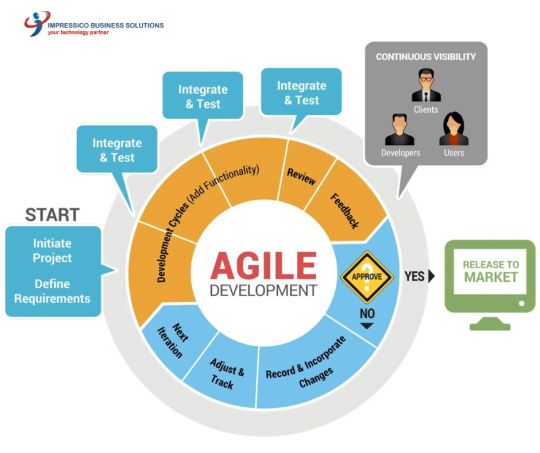
Impressico Business Solutions leverages Agile Software Development Company to deliver innovative, high-quality solutions tailored to evolving business needs. Their collaborative approach ensures faster time-to-market, scalability, and adaptability, empowering businesses to stay competitive. Partner with them for seamless project execution, iterative delivery, and exceptional results driven by Agile methodologies and industry expertise.
#Agile Software Development#Agile Software Development Company#Agile Software Development Services#Agile Development Services#Agile DevOps Tools
0 notes
Text
Embracing Agile: How Flexible Development Fuels Innovation
The ability to adapt quickly and efficiently is crucial for survival. This is especially true in the software development world, where speed and agility can make the difference between meeting deadlines or falling behind. That’s where agile development services come into play. By embracing a flexible approach, businesses can more effectively navigate changing requirements, deliver high-quality products, and maintain a competitive edge. This article will explore the fundamentals of agile methodology, highlight its benefits, and discuss the role of agile development technology in driving success.
1. What is Agile?
Agile is a project management and software development methodology that emphasizes flexibility, iterative progress, and collaboration. Instead of planning every detail upfront, Agile teams work in short “sprints” and regularly reassess their priorities. This allows them to respond quickly to new information, customer feedback, or shifting market conditions.
By breaking projects down into smaller, manageable tasks, team members maintain clear focus on immediate objectives. With frequent checkpoints, developers can address any issues quickly, minimizing risk and ensuring the product evolves in line with user needs.
2. Core Principles of Agile
Customer Collaboration
Agile prioritizes engaging customers or stakeholders throughout the development cycle. Regular feedback loops prevent major misunderstandings and help teams deliver solutions that truly meet end-user requirements.
Adaptive Planning
Rather than committing to a rigid plan at the outset, Agile teams continuously refine their scope based on new insights. The result is a flexible roadmap that can pivot efficiently as needs evolve.
Short Iterations
Work is organized into sprints — usually lasting two to four weeks — allowing developers to focus on specific features. At the end of each sprint, teams assess progress, solicit feedback, and plan subsequent steps.
Cross-Functional Teams
Agile emphasizes collaboration across various expertise areas — such as development, design, and testing — to promote synergy and streamline workflows. Having all necessary skills in one team speeds up decision-making and implementation.
Continuous Improvement
After each sprint, teams engage in retrospectives to identify what worked well and what could be improved. This iterative mindset fosters ongoing growth and adaptability.
3. Benefits of Agile
Faster Delivery
Because work is split into smaller chunks with short timelines, teams can release features or updates more quickly. This approach also reduces the time from idea to market, enabling businesses to stay competitive and adapt to consumer demands.
Enhanced Quality
Regular testing and quality checks at the end of each sprint help spot defects early. This preemptive problem-solving saves teams from massive rework and ensures a better overall product.
Improved Stakeholder Alignment
Frequent demonstrations and open communication keep stakeholders aligned with the project’s direction. This transparency mitigates the risk of large-scale revisions late in the process and ensures that the final product meets everyone’s expectations.
Greater Employee Engagement
Agile fosters an environment of shared ownership and mutual respect. Team members feel valued when their input is acknowledged and integrated, often resulting in increased motivation and job satisfaction.
4. Roles in an Agile Team
Product Owner: Represents the stakeholders, sets project vision, and manages the product backlog (list of tasks and features).
Scrum Master: Facilitates team processes, removes obstacles, and ensures adherence to Agile principles.
Development Team: Typically comprises developers, designers, and testers responsible for building the product within each sprint.
These roles may vary depending on the framework or project size, but the core principle remains the same: clear communication and collective responsibility.
5. Choosing the Right Framework
Several Agile frameworks have gained popularity over the years, each with its own focus areas:
Scrum: Ideal for teams working on complex projects that benefit from frequent reassessment.
Kanban: Offers a visual board to track tasks, limiting work in progress to maintain smooth flow.
Lean: Focuses on eliminating waste and optimizing resources.
Extreme Programming (XP): Emphasizes high-quality software via frequent releases and pair programming.
The choice often depends on project requirements, team size, and organizational culture. However, many teams combine elements from different frameworks to create a hybrid approach tailored to their unique needs.
6. The Role of Agile Development Services
Partnering with professionals who specialize in agile development services can accelerate your project’s success. These experts offer:
Customized Strategies
Every business has distinct goals and challenges. Seasoned Agile practitioners develop tailored roadmaps that align with your specific objectives, ensuring no wasted effort.
Training and Coaching
Shifting to Agile can be daunting for teams used to traditional methodologies. External specialists often provide training sessions and hands-on guidance to ease the transition and encourage cultural buy-in.
Best Practices
Experienced Agile consultants bring a wealth of knowledge from working on multiple projects. They can recommend industry-standard tools, testing frameworks, and documentation methods that keep teams on track.
Scalability
As your project grows, an Agile services partner can help you scale processes, coordinate multiple teams, and maintain quality control across various product lines.
7. Harnessing Agile Development Technology
While methodology and team culture are critical, technology also plays a pivotal role in implementing and sustaining Agile practices. Agile development technology includes:
Project Management Tools: Platforms like Jira, Trello, or Asana facilitate sprint planning, backlog prioritization, and real-time tracking.
Continuous Integration/Continuous Deployment (CI/CD) Pipelines: Tools like Jenkins or GitLab CI/CD automate code integration and testing, ensuring rapid feedback and smoother releases.
Version Control Systems: Git-based platforms (e.g., GitHub, Bitbucket) allow multiple team members to work on the same codebase without stepping on each other’s toes.
Collaboration Suites: Messaging platforms like Slack or Microsoft Teams offer instant communication channels, quick decision-making, and file-sharing options.
By combining the right tools with well-orchestrated processes, businesses can optimize their workflows and reduce turnaround times.
8. Overcoming Common Challenges
Despite its advantages, adopting Agile can present challenges:
Cultural Resistance: Long-standing hierarchies may hesitate to embrace flat team structures or open collaboration. Strong leadership and clear communication are vital to easing this transition.
Scope Creep: Frequent iteration cycles risk expanding requirements if stakeholders keep adding features. Maintaining a well-defined product backlog and adhering to sprint goals can help.
Poor Estimation: Agile doesn’t eliminate estimation hurdles. Teams must refine their processes — like velocity tracking — to minimize delays and meet realistic deadlines.
Distributed Teams: Agile thrives on face-to-face interaction. Organizations working with remote members or freelancers need robust communication tools and synchronized workflows to remain effective.
As competition continues to intensify, companies that fail to innovate or adapt risk losing relevance. Agile provides a framework for staying nimble, cultivating teamwork, and consistently delivering value — all of which can spell long-term prosperity in today’s dynamic marketplace.
0 notes
Text
Agile Software Development Company: Empowering Businesses with Agile Software Development Services
In today’s fast-paced digital era, an Agile Software Development Company plays a crucial role in delivering high-quality, adaptive, and efficient software solutions. Businesses seeking speed, flexibility, and collaboration are turning to Agile Software Development services to accelerate their product development and stay ahead of market demands.
A leading Agile Software Development Company focuses on iterative development, continuous feedback, and close client collaboration. This approach minimizes risks, enhances product quality, and ensures that the final solution aligns with business goals. From startups to large enterprises, Agile Software Development services offer a dynamic framework that supports quick adjustments, real-time updates, and efficient resource utilization.
Key offerings of a top Agile Software Development Company include sprint planning, Scrum management, continuous integration, and test-driven development. These Agile Software Development services help companies reduce time to market, adapt to changing requirements, and deliver customer-centric software.
Choosing an experienced Agile Software Development Company ensures streamlined workflows, enhanced team productivity, and robust digital solutions. With Agile Software Development services, businesses can innovate faster, scale smarter, and achieve sustainable growth in a competitive landscape.
0 notes
Text
AI Consultant in UK: Transforming SMEs with Smart Technologies

AI's impact is beginning to reach SMEs in other parts of the UK. An AI consultant in UK is not limited to use by big technology companies; blog SMEs are adopting these applications and thus, are able to grow smarter, faster and cheaper.
How UK AI Consultants Help SMEs
1. Automating Repetitive Tasks
AI tools such as:
Customer service chatbots
Invoice processing systems
Inventory control systems
Tracking systems
2. Enhancing Marketing with AI
The use of:
Predictive analytics for customer behavior
Intelligent segmentation in email marketing
Automated content generation procedures
is made possible by UK consultants.
3. Improving Decision-Making
Real time analytics is provided by AI Tools.
Consultants put together dashboards displaying KPIs and market trends.
4. Optimizing Operations
AI consultants help in scheduling and managing logistics by:
Assessing and diagnosing operational efficiency gaps.
Providing automation and optimization tools.
Success Stories
One retail SME based in London integrated AI systems and AI recommendations resulted in a 30% increase in sales.
A Birmingham-based logistics firm made use of AI routing tools, which allowed them to cut delivery holdups by 40%.
Conclusion
Even small businesses can benefit from AI. An AI consultant in UK is capable of equipping small and medium-sized enterprises with smart tech that improves productivity, provides business intelligence, and aids in cost reduction—all within financial reach.
#artificial intelligence services#artificial intelligence companies#ai solutions companies#hybrid application development company#hybrid app development company#agile software development consulting
0 notes
Text
Transforming Businesses with Enterprise Digital Transformation, IT Consulting, and Agile Development

As technology continues to reshape industries, businesses must prioritize enterprise digital transformation and IT consulting to remain competitive. A key enabler of this transformation is agile custom software development services, which allow organizations to build customized, efficient, and scalable solutions.
This article explores how digital transformation, IT consulting, and agile development work together to empower businesses for future success.
The Role of Enterprise Digital Transformation in Business Growth
Enterprise digital transformation enables businesses to:
Streamline operations for increased efficiency.
Improve customer satisfaction through digital engagement strategies.
Leverage AI and cloud computing for data-driven insights and automation.
How IT Consulting Facilitates Digital Transformation
IT consultants play a vital role in guiding businesses through digital transformation by:
Assessing current technology landscapes to identify gaps and opportunities.
Providing expert recommendations for software development and IT infrastructure.
Ensuring seamless technology integration with existing business processes.
The Impact of Agile Custom Software Development Services
Agile software development enhances digital transformation efforts by:
Enabling continuous improvement through incremental updates.
Ensuring faster deployment of business-critical applications.
Encouraging collaboration between development teams and stakeholders.
Conclusion
By embracing enterprise digital transformation and IT consulting, businesses can unlock new growth opportunities. Combined with agile custom software development services, organizations can stay ahead of market trends, enhance operational efficiency, and build future-ready digital solutions.
1 note
·
View note
Text
Best Practices in Software Development: Writing Clean and Efficient Code
Introduction
In today's technology-driven world, software development is pivotal for businesses and individuals aiming to innovate and streamline operations. It encompasses the entire process of designing, coding, testing, and maintaining software applications to meet specific needs. Whether you're a startup, a large corporation, or an individual entrepreneur, investing in software development ensures efficient processes and a competitive edge.
Types of Software Development
Front-End Development
Focuses on the user interface and experience, utilizing technologies like HTML, CSS, and JavaScript to create interactive and visually appealing applications.
Back-End Development
Manages server-side logic, databases, and application integration, ensuring that the software functions correctly behind the scenes.
Full-Stack Development
Combines both front-end and back-end development skills, enabling developers to build comprehensive applications from start to finish.
Mobile Application Development
Involves creating applications specifically designed for mobile devices, using platforms like iOS and Android.
Embedded Systems Development
Focuses on developing software for specialized hardware systems, such as automotive controls or medical devices.
Key Technologies in Software Development
Programming Languages: JavaScript, Python, Java, C#, and C++ are among the most commonly used languages.
Frameworks and Libraries: React, Angular, Django, and .NET aid in building robust applications efficiently.
Databases: Systems like MySQL, PostgreSQL, and MongoDB are used to store and manage data effectively.
Version Control Systems: Tools like Git help in tracking changes and collaborating on codebases.
Benefits of Professional Software Development Services
Customized Solutions: Tailored software meets specific business requirements, enhancing efficiency.
Scalability: Professionally developed software can grow with your business needs.
Security: Implementing best practices ensures data protection and minimizes vulnerabilities.
Maintenance and Support: Ongoing support ensures the software remains up-to-date and functional.
How to Choose the Right Software Development Service Provider
Experience and Expertise: Look for providers with a proven track record in your industry.
Portfolio and Case Studies: Review past projects to assess quality and relevance.
Client Testimonials: Positive feedback indicates reliability and satisfaction.
Communication and Collaboration: Ensure they have a transparent process and are open to feedback.
Common Challenges in Software Development
Requirement Changes: Evolving needs can lead to scope creep if not managed properly.
Technical Debt: Compromises in code quality for quick delivery can cause future issues.
Integration Issues: Ensuring new software works seamlessly with existing systems.
Resource Constraints: Limited time, budget, or skilled personnel can impact project success.
Future Trends in Software Development
Artificial Intelligence and Machine Learning: Integrating AI to create smarter applications.
Cloud Computing: Leveraging cloud platforms for scalable and flexible solutions.
DevOps Practices: Combining development and operations for faster delivery cycles.
Internet of Things (IoT): Developing software for interconnected devices.
Conclusion
Investing in professional software development is crucial for organizations aiming to stay competitive and efficient in the modern landscape. By leveraging the right technologies and expertise, businesses can create solutions that drive success and innovation.
FAQs
What is the average cost of software development services?
Costs vary widely based on project complexity, scope, and location of the development team. It's best to obtain quotes from multiple providers.
How long does it take to develop a software application?
Timelines depend on the project's size and complexity; simple applications may take a few months, while larger systems can take a year or more.
What is the difference between front-end and back-end development?
Front-end development deals with the user interface and experience, while back-end development focuses on server-side logic and database interactions.
Can I update my software application after development?
Yes, regular updates are essential for adding features, improving performance, and ensuring security.
Why is mobile responsiveness important in software development?
With the increasing use of mobile devices, ensuring applications work well on various screen sizes enhances user experience and accessibility.
#Software Development Services#•#Software Development Languages#Software Development Outsourcing#Agile Software Development#Software Development Lifecycle#Software Development Methodologies#Software Development Process
0 notes